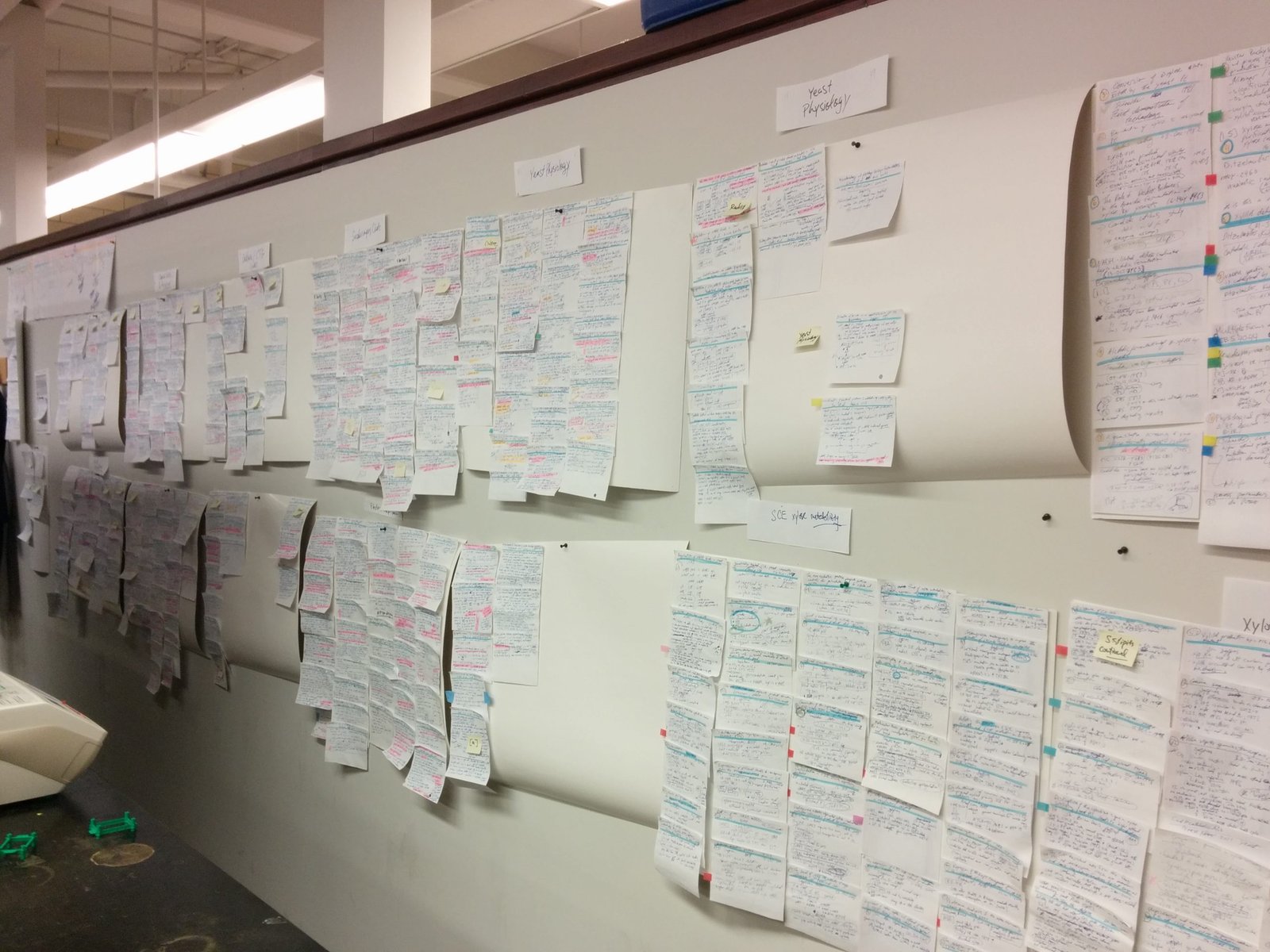
We all want to read more than we actually do. This is especially true with the scientific literature. We dip into a Twitter to find new scientific articles but many of us are browsing or taking a break from work, and we often get distracted by the news of the day. You go to Google Scholar to search for a specific article and get distracted to read some of their “Recommended articles.” Maybe that article you wanted to read on Twitter shows up again on Google Scholar. You attend a conference and learn about a group’s research that you should have learnt about months ago when it was published. Science has a distribution and dissemination problem.
The origins of the Biowall Project goes back to 2013. I had just come back from a conference in San Francisco where Prof. Markus Covert shared research from his lab about the whole cell model. He described how they poured over many articles to build the model, including the most mundane about enzyme kinetics. I already had a research direction for my thesis, but this approach felt appealing.
I thought back to a TV show I had recently watched called Flashforward. It’s a story about how on October 6, 2009, everyone in the world loses consciousness and has a vision of what happens to them on April 29, 2010. The vision is not an illusion, but a vision of the truth. A program called Mosaic was created by the FBI to piece together peoples’ visions to understand what happened and what will happen. You can see a preview here:
I came to realize that every paper has a role to play in uncovering the truth. Of course not all papers are equal. Some papers provide new data and insights, others confirm what has been shown before or provide marginal improvements. Unfortunately, others may include manipulated data or faulty reasoning, but I would argue these are still important because they inform us about credibility and biases.
Given this insight, I started Biowall. My Biological Information Firewall. Cue card summaries of journal articles from specific research groups or topics pinned onto Bristol boards in chronological order (shown above). This helped me easily skim through the literature I had read, so I can understand how a group’s thinking developed and evolved.
Papers from the original Biowall includeded:
- Scheffersomyces stipitis (a hipster yeast largely studied in the 1980s and 1990s, when I was playing Super Mario World)
- Saccharomyces cerevisiae strains engineered to ferment xylose
These papers mostly spanned the labs of:
- Scheffers, van Dijken, Pronk, at TU Delft, the Netherlands
- Hahn-Hägerdal at Lund University, Sweden
- Thomas Jeffries at Wisconsin-Madison
- du Preez at the University of the Orange Free State, South Africa
My idea was that if some non-prominent lab discovered something important, it would most likely get incorporated into the body and references from the prominent labs.
Project Biowall is about developing habits that promote slow science to the right destination, rather than fast science to the wrong destination. Aiming to provide you with monthly updates on the research that you care about, so that you can find time in your busy schedule to read.